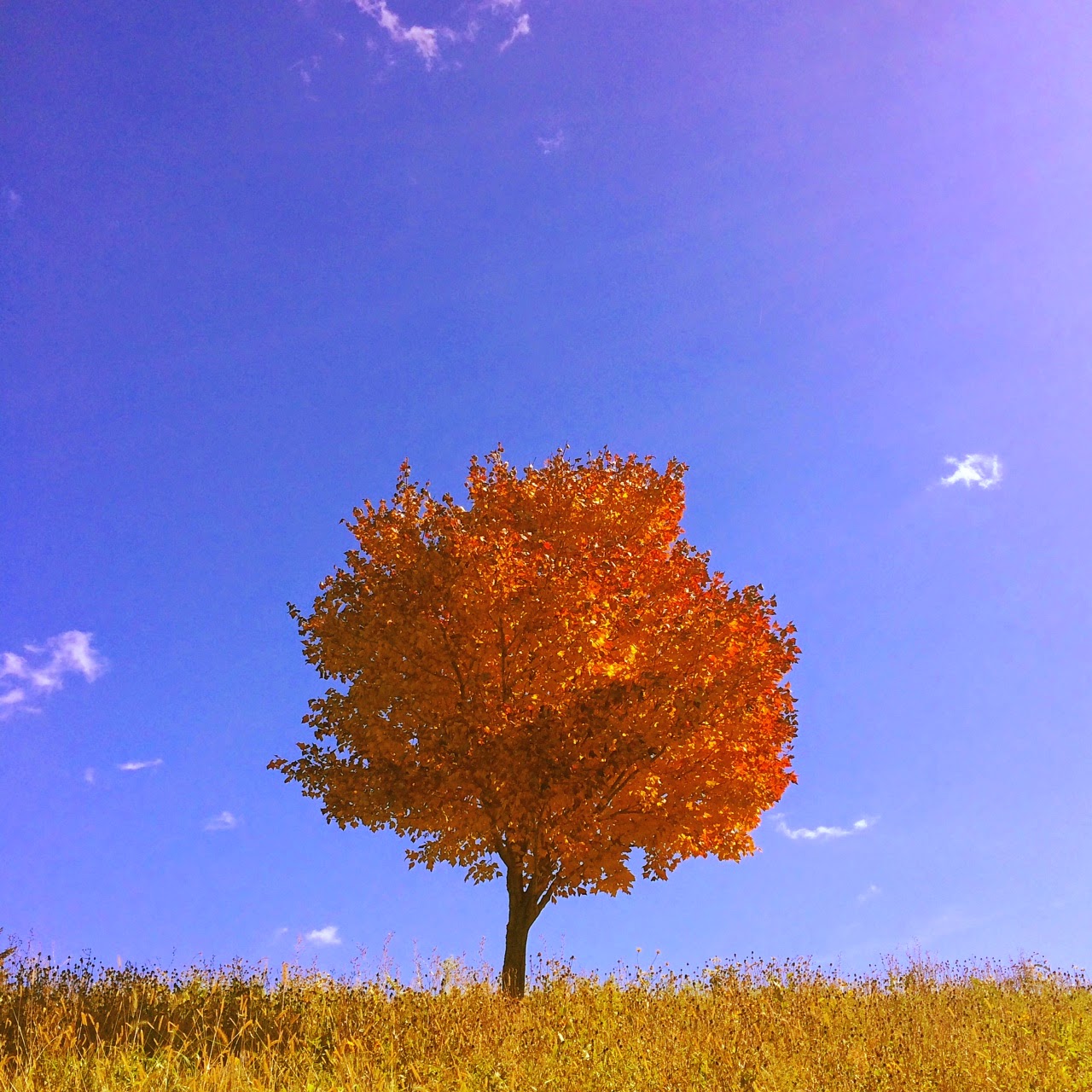What Happened to the Leaves?!
By Zola Pineles |
| Keller Golf Course. Photo by Zola Pineles. |
What are a couple things that come to mind when thinking of autumn in Minnesota? Shorter days, colder weather, and leaves changing are some of the most distinct differences in the changing seasons. But what exactly makes those leaves become a fiery red and bright yellow? The answer lies beneath the surface of the leaf and deep into its cells. Starting with chlorophyll in the summer, ending with carotenoids and anthocyanins, the transformation of a leaf is a colorful journey.
Chlorophyll
green.jpg) |
| Burr Oak. |
In the spring and summer months, leaves develop with the purpose of photosynthesizing, or converting sunlight into energy used as food for the entire tree. It’s the green chlorophyll that absorbs all the energy given from the sunlight. When the light reflects from the chlorophyll, we see the leaves as a bright green color. The warm summer months allow chlorophyll to thrive and continue to break down and be regenerated by the leaf. Once fall arrives, there is not enough solar energy for the leaf to continue making chlorophyll. It starts to break down, disappear, and reveal the pigments that have been hiding during the summer.
Carotenoids
yellow.jpg) |
| Silver Maple. |
Carotene is a pigment that is made and stored in the same place as chlorophyll. Unlike chlorophyll, carotene is much more stable and persists through the colder fall days. During the summer when chlorophyll is doing most of the work delivering food to the entire tree, carotene acts as an assistant absorber of energy. When fall arrives and chlorophyll starts to disappear, the leaves become a bright yellow due to the carotene remaining. Some examples of trees with yellow fall foliage are cottonwood, paper birch, yellow birch, Kentucky coffee tree, green ash, silver maple, Norway maple, and honey locust. Keep your eyes peeled because all of these trees can be experienced throughout the district!
Anthocyanins
.jpg) |
| Red maple. |
Anthocyanins are the cause of bright red colors in the fall. Anthocyanins are made in the sap of a leaf during a mixture of sugars and certain proteins. The shade of red that is seen from the outside of the leaf depends on how much acid is in the sap of the leaf. When there is more acid in the sap, the leaf is a brighter red. When the leaf sap has less acid, the leaf is a purple color. Some good examples of trees with plenty of anthocyanins are pin cherry (red), chokecherry (deep purple), smooth and staghorn sumac (bright red), nanny berry (purple – red), sugar maple (red – orange), red maple (deep red), red twig dogwood (red – purple), alternate leaf dogwood or pagoda dogwood (red), and the invasive amur maple (bright red).
browntinged.jpg) |
| Smooth sumac. |
Everything in Between
orange.jpg) |
| Red maple (showing variable color changes vs. photo above). |
Of course yellow and red are not the only colors witnessed during the fall. When a leaf has both carotenoids and anthocyanins present, the leaves will appear orange as seen in the sugar maple, paper birch, white ash, and silver maple.
A leaf that has chlorophyll and carotenoids present will have a very bright green-yellow color as seen in hackberries.
yellow.jpg) |
| Hackberry. |
Leaves with both chlorophyll and anthocyanin will produce a brown-tinged color as seen in white, red, and bur oaks.
browntinged.jpg) |
| Red oak. |
Whether the Weather
 |
| Lake Phalen. |
While many trees have the ability to produce incredible fall landscapes, much of the process is highly weather dependent. The best conditions for a colorful fall are those that aid the destruction of chlorophyll. This means cool temperatures, plenty of sun, and dry conditions create the most colorful autumn trees. What does that mean for this year’s leave viewing? Pretty great! Most areas in the district have benefited from the cool temperatures and the high level of rain throughout the summer. Now that you know a little more about leaf transformation, go outside and take a look around!!
.jpg) |
| Gervais Mill Ponds. |

No comments:
Post a Comment